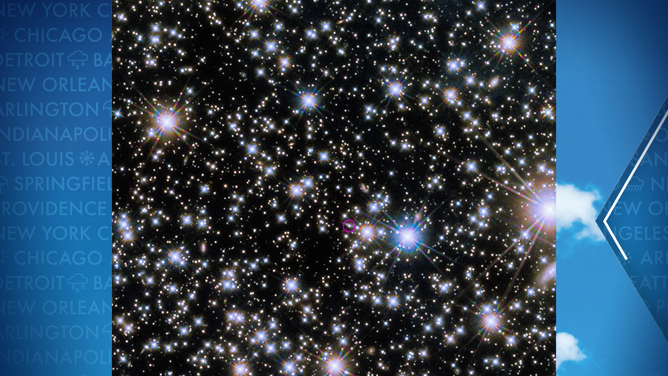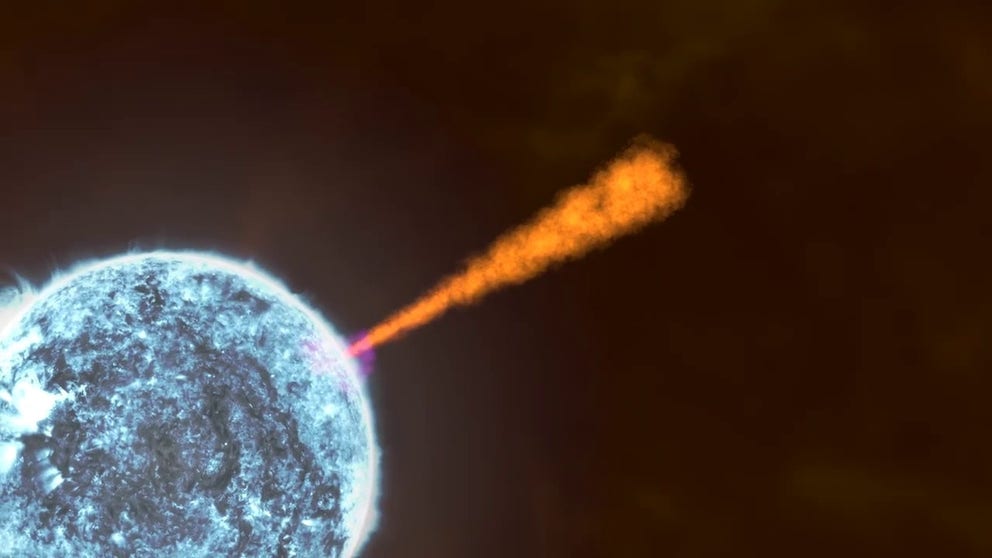Bright cosmic burst may be a 1-in-10,000-year event
Astronomers think gamma-ray bursts are caused when a massive star breakdowns, runs out of nuclear fuel and collapses under its own weight, forming a black hole.
Animation of a gamma-ray burst
An explosion that was detected moving through the universe back in October 2022 was likely the strongest burst to ever hit Earth, experts have hypothesized after months of research (NASA)
A pulse of radiation that was detected moving through the universe back in October 2022 was likely the strongest burst to ever hit Earth, experts have hypothesized after months of research.
The burst of energy, known as GRB 221009A, was so intense it blinded most gamma-ray instruments in space, which meant they could not record the real intensity of the emissions.
Experts believe the event had been traveling for nearly 2 billion years before it reached Earth and was dubbed the BOAT – the brightest of all time.
"These explosions are among the brightest things we see in the universe, and so intense we can see them basically halfway across the universe," Sebastian Heinz, a University of Wisconsin–Madison astronomy professor, said in a statement. "This one was so bright compared to other gamma-ray bursts we expect it will be the brightest of all time for the foreseeable future."
Astronomers believe gamma-ray bursts are caused when a massive star breakdowns, runs out of fuel and collapses under its own weight, forming a black hole.
SEE THE OBJECTS HUMANS LEFT BEHIND ON THE MOON

The Hubble Space Telescope revealed the infrared afterglow
(NASA)
Scientists believe the event was 70 times more intense than any other emissions ever recorded and was generated far beyond the Milky Way galaxy.
Despite the burst only lasting a few minutes, scientists say telescopes such as the Hubble will be able to view the afterglow for decades.
"Being so close and so bright, this burst offered us an unprecedented opportunity to gather observations of the afterglow across the electromagnetic spectrum and to test how well our models reflect what’s really happening in GRB (gamma-ray burst) jets," Kate Alexander, an assistant professor of astronomy at the University of Arizona, stated. "Twenty-five years of afterglow models that have worked very well cannot completely explain this jet. In particular, we found a new radio component we don’t fully understand. This may indicate additional structure within the jet or suggest the need to revise our models of how GRB jets interact with their surroundings."
LISTEN TO THE HAUNTING SOUNDS OF A BLACK HOLE
More observations are expected to continue as debate among astronomers intensifies as to whether the burst was the result of a supernova.
NASA defines a supernova as a star that explodes into bright light when it has reached the end of its life cycle.
The last supernova explosion in the Milky Way is believed to have occurred over 150 years ago.
